Once cod reach maturity, for much of the year their diet consists mostly of fish. This predatory nature makes them the ideal target for offshore lure anglers. Get the tactics and lures right, and big catches can be made.
In this Tronixpro Know How article, we’re going to look at lure fishing with conventional boat fishing rods and reels, using light boat rods with soft plastic lures to promote the sport fishing ethic. We'll cover more advanced lure fishing tactics in subsequent blogs.
When cod lure fishing, you’ll be drift fishing using the wind and the tide to cover a wide variety of ground over a large area, maximising your chances of finding fish.
The cod are usually of a decent size too, with fish between 3 and 6lbs common, but always the chance of much larger fish, depending on the time of year.
The Season
Over the rough inshore ground, the best period is from around late May to February, with the summer into autumn period especially good.
On the offshore wrecks, the fish can be present all year, though numbers will fluctuate wildly. Wrecks produce good numbers of cod from June to September, then numbers fall as the fish move inshore anticipating the autumn and winter storms. In January, the fish move back out and the period through February and March into April can see big fish resident on the deeper offshore wrecks.
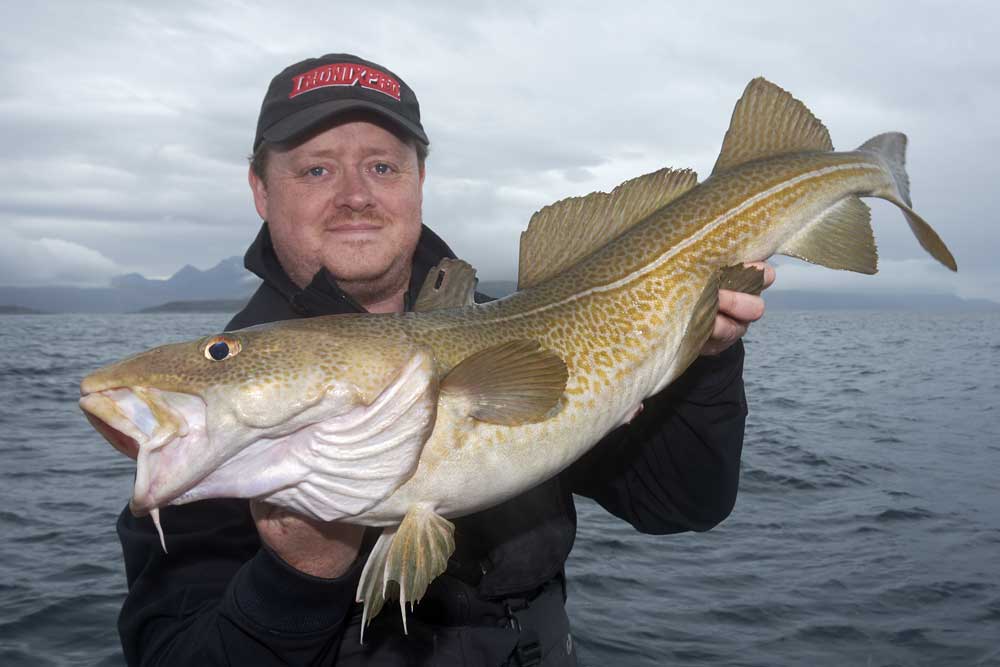
Habitat
Cod favour rough ground. This can be patches of boulders or reef surrounded by areas of sand out from beaches. The better catches come from venues where rising cliffs dominate the shoreline and the rough ground drops into deeper water.
The specific feature you’re looking for are areas where flattish rough ground changes to pockets of bigger boulders, small rising rock pinnacles and vertical rock ledges. The cod will station themselves around the base of these structures and wait for passing prey. If it’s reef ground, they’ll hunt along the edges of the reef, trying to scare smaller prey fish like pout and poor cod out from their hidey holes. Furthermore, note any kelp weed beds, as these are also holding areas for cod.
On reef ground where the tide flows across it, the cod feed where the current coming over the reef falls back towards the seabed. This carries small prey fish such as sandeels with it, and the cod take full advantage.
On the offshore wrecks, the fish often feed tight to the structure on the down tide side where the flow of water is lessened by the effect of the wreck which pushes the tide flow over it, forming an area of slacker water underneath. That said, the best wrecks are the ones that have split and broken their backs due to water pressure or exploded and gone down in two separate halves. This creates a wide debris field of metal and structure with cleaner ground in between, and cod seem to love to feed among such carnage.
Weather and Tides
Inshore, periods of calmer seas can bring sprat shoals inshore to swell the ranks of the normal pout and poor cod in the winter and at this time a calm sea can fish well for the lure angler. Generally, though, the best fishing is in a steady onshore wind no more than Force 4 that creates a nice steady sea swell and puts a wave on the sea surface. The wave effect cuts down the light levels entering the water column, and this aids the fishing. Days with an overcast sky also produce more fish than bright sunny days.
These calmer seas may also bring herring into the inshore waters, and cod always follow the herring in.
Offshore fishing needs calm settled weather for the most part, but the same principles of having a light sea swell, some wave on the water, and an overcast sky will still contribute to enjoying greater success.
A general rule is that cod like some tide run, so over the rough ground and reefs, expect the fish to show best when the tide is beginning to flow around an hour after low and high-water slack. The middle hours of the flood and ebb will also produce, though some marks fish best on the flood, with others good on the ebb.
Many inshore ground marks are best fished on the smaller neap tides to keep the drift of the boat slower and for the lures to be presented correctly. The same applies to wrecks. However, in some areas where tidal flow is lessened, then bigger tides and even high spring tides can produce well.
Tackle
For inshore cod lure fishing a 12/20lb class rod is ideal such as the Tronixpro Banzai 12/20lb class rod. The longer rods between 7’6” and 8” are best, as they have the length to let you lift and work the lure far more effectively with less physical effort on your part. Reel wise, a multiplier reel holding around 300yds of 20lb gives more than adequate line capacity and makes for a balanced outfit, plus has the power to handle any cod that happens along.
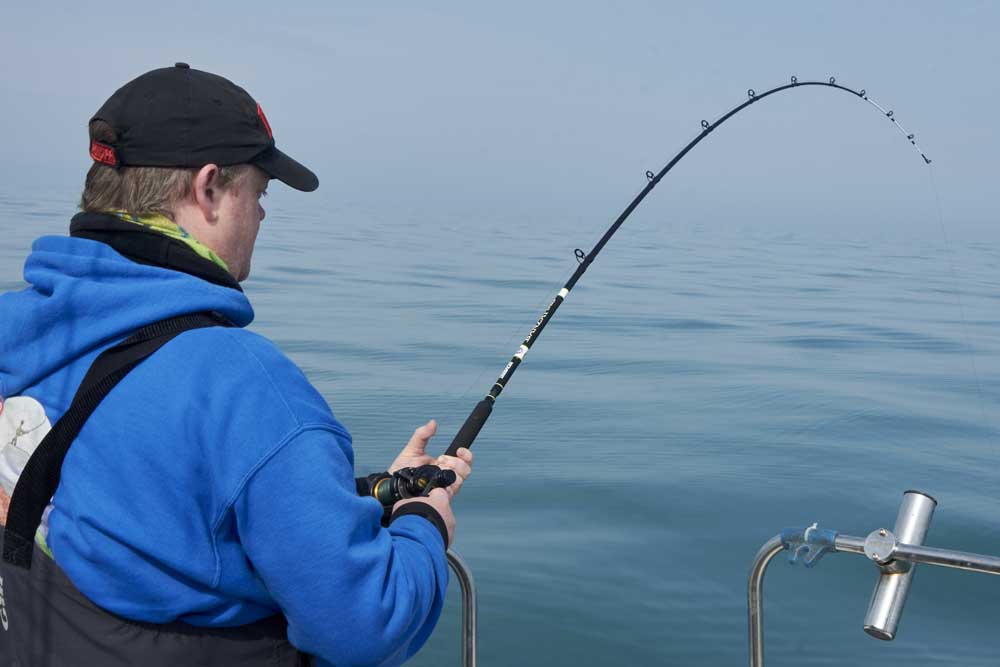
Line should always be braid such as the Tronixpro X8 Power Braid in the 20 to 30lb range and use mono backing to fill the reel. Always add a short 20/30lb AXIA Fluorocarbon leader. This gives a clear separation between the braid and rigs and can help get more bites when the water is clear. The Fluorocarbon is also more effective at minimising abrasion from rocks and boulders, than the braid is. It saves money on reducing lost tackle, but also saves fish that may otherwise be lost too.
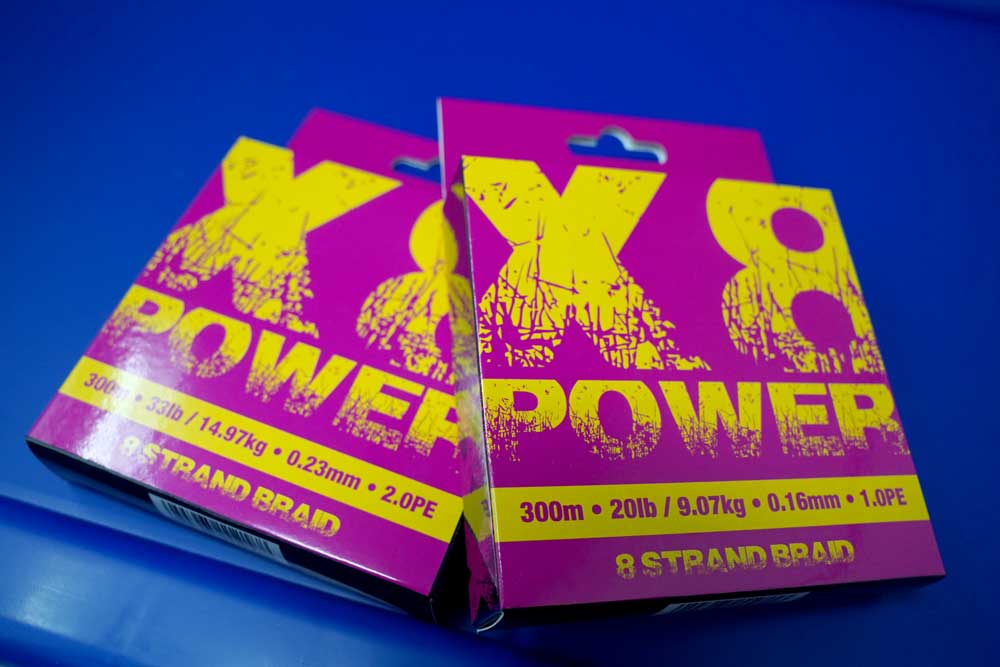
In areas where tidal flow is minimal and at slack water, light lure fishing rods 8 to 9ft in length and rated to cast up to 80g maximise the sport fishing aspect. Reel size should be a 4000 sized fixed spool and load with 20lb braid and a Fluorocarbon leader. The HTO Nebula SP range of rods is ideal for this kind of fishing, especially when paired with an HTO Lure Game 4000 reel and HTO X8 Nebula Braid.
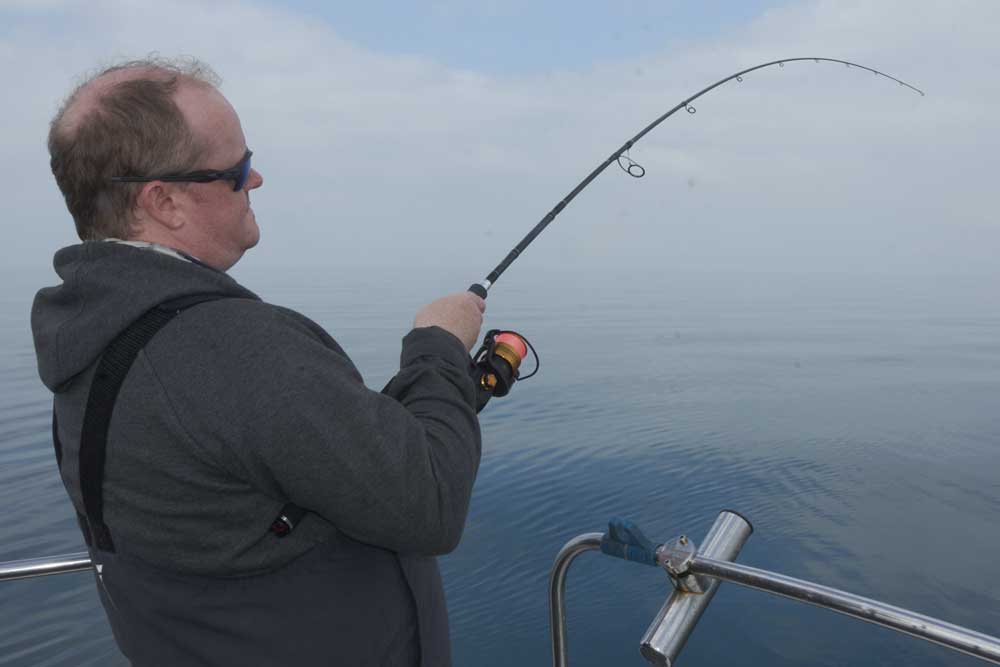
Over the wrecks the same 12/20lb outfit will often prove best if the tide run and drift speed is not too fast, and you can use leads up to say 10ozs. If the drift is fast, and you need more than 10oz weights to stay tight to the seabed, then moving up to the Tronixpro Banzai 20/30lb rod and larger multiplier reel holding 300yds of 30lb mono plus backing will help. Load this reel with 30lb braid and mono backing as required to fill the reel. Retain the Fluorocarbon leader, but increase the strength to 30 or 40lbs.
Rigging Up
The best rig for cod lure fishing is a Whitby Rig. Simply tie on to the end of your leader a size 2/0 Interlock Snap Swivel, Safety Snap Swivel or Coastlock Snap Swivel, depending on your preference. The hook length is tied to the same eye of the swivel as the leader and again should be 20lb AXIA Fluorocarbon with the lure tied on the free end. The lead weight is then clipped in the link. It’s simple but highly effective and minimises losses.
On the wrecks, if you need too, increase the hook length to 25 or 30lb Fluorocarbon.
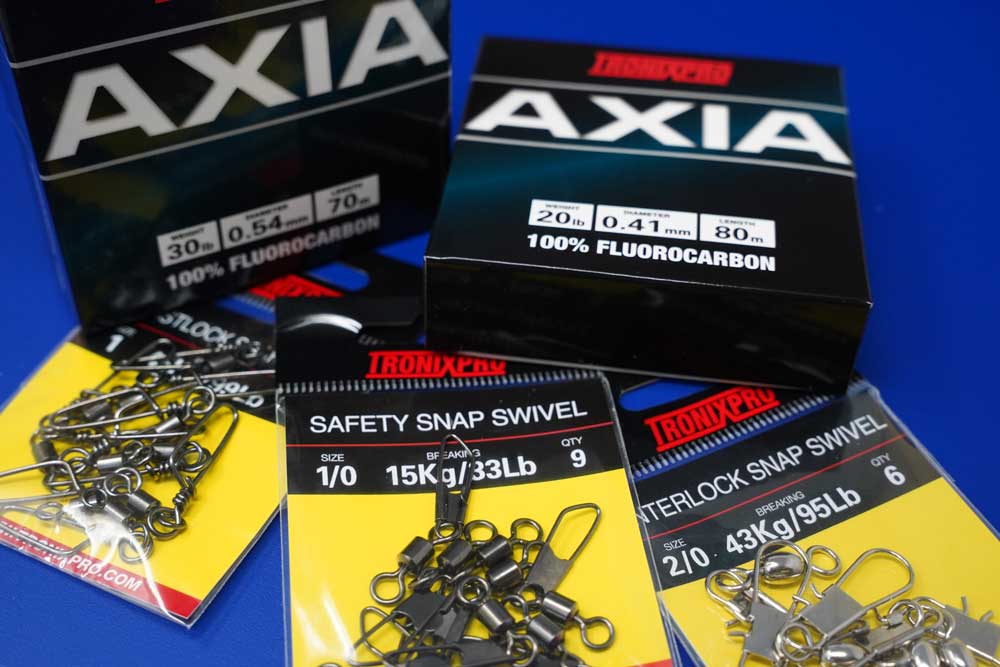
Best Lures
Cod fishing lures need to be a lead head type. This is important! As the lead weight descends at speed to the seabed, the lure will fall tight to the leader. If it should twist round the leader, as the lead weight hits the seabed, if you lift the rod tip up a few feet, this will see the lead weight rise as the lure is still falling. The weight of the lead head will then pull out any hook trace tangles to see the hook trace fish cleanly straight out from the snap swivel.
Lures with a paddle type tail like the AXIA Weedless Minnow and Mighty Minnow are excellent fish takers as they put a lot of vibration in the water that the fish home in on. Sandeel imitations like the AXIA Mighty Eel are deadly, so are smaller shad type lures that imitate sprat and small fish. Carry lures of different lengths from 90mm to 175mm and swap around during the day until you find a specific length that takes more fish. Cod can become preoccupied with specific size of species and if you fish something different it will drastically reduce your catch rate.
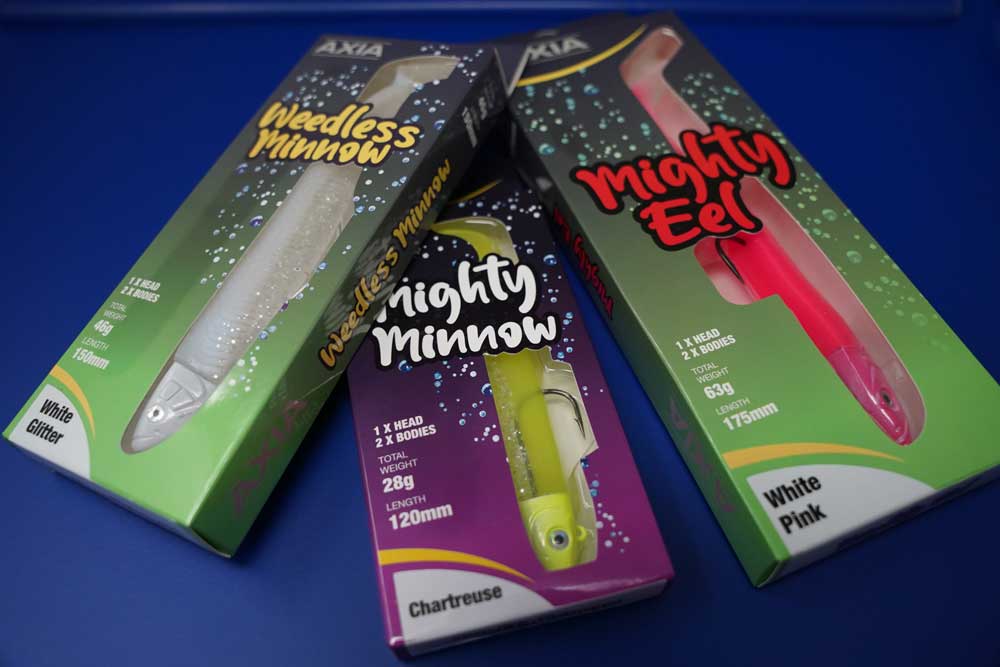
As for colours, the more obvious white, pink (deadly at times) and chartreuse work best in slightly coloured waters, say after a recent period of rough seas. In clear water, use a darker colour that stands out as a silhouette, as cod are deep down looking up to intercept passing prey. Blue and green can be good colours for highlighting the silhouette.
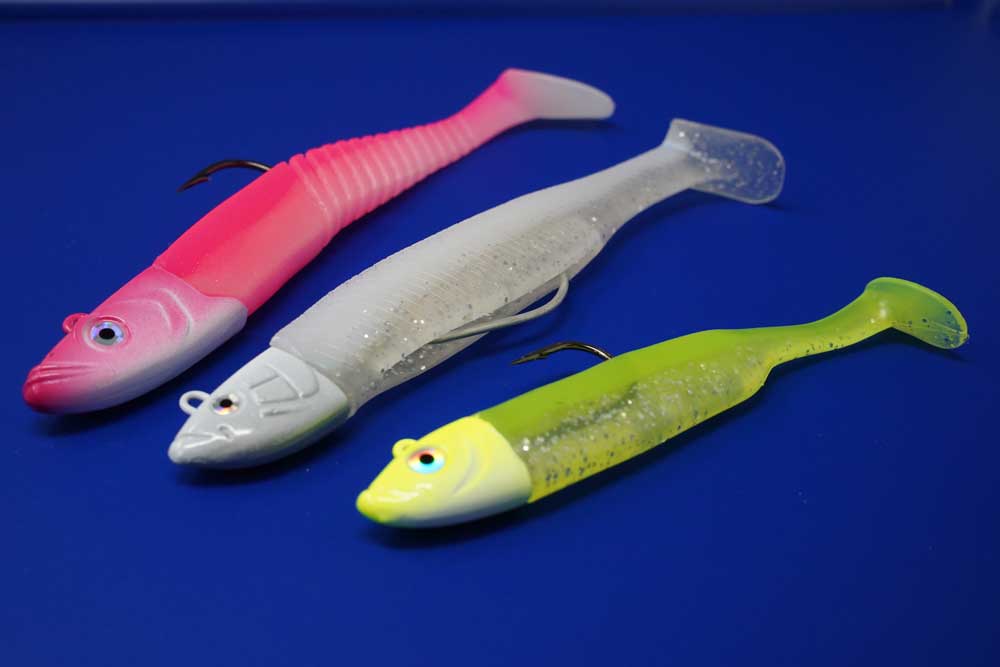
You can always add a lead head to a standard Firetail worm, shad or sandeel, and it will fish just as well as a lure formed with an internal lead head.
Tactics
When cod lure fishing while drifting over more even rough ground, use a short hook length, no more than 4ft in length. When the lead weight hits the sea floor, lift the rod tip and wind in around 5ft of line. If you now lift and drop the rod tip, the lure will “hop” up and down tight to the seabed. It doesn’t matter if the weight occasionally hits rocks, as the noise can bring inquisitive cod in to see what’s happening. This hopping action imitates a prey fish feeding over the ground. The cod tend to hit the lure just as it's dropping back to the seabed. This hopping method is equally good when fished tight to wrecks and especially when working a debris field.
Over wrecks in deeper water, the lure is best retrieved. Feel the lead hit the seabed and instantly start a slow retrieve and count the turns of the reel handle. 10 to 15 turns are usually far enough. The cod tend to be tighter to the seabed than pollack and coalfish, and to target the cod you need to be in their zone, so your retrieve needs to be slow and relatively short. Change the speed of retrieve from slow to medium speed to see what the fish want on the day.
Make sure you constantly change your lead weights, looking to use just enough lead to get you to the seabed and to keep the line as vertical as possible. If the line is streaming away at a shallowing angle, then you’re not fishing effectively and will be above the fish.
Cod hit the lure like a hammer and typically hook themselves. Just keep winding until the rod tip pulls over, and you feel the full weight of the fish.


